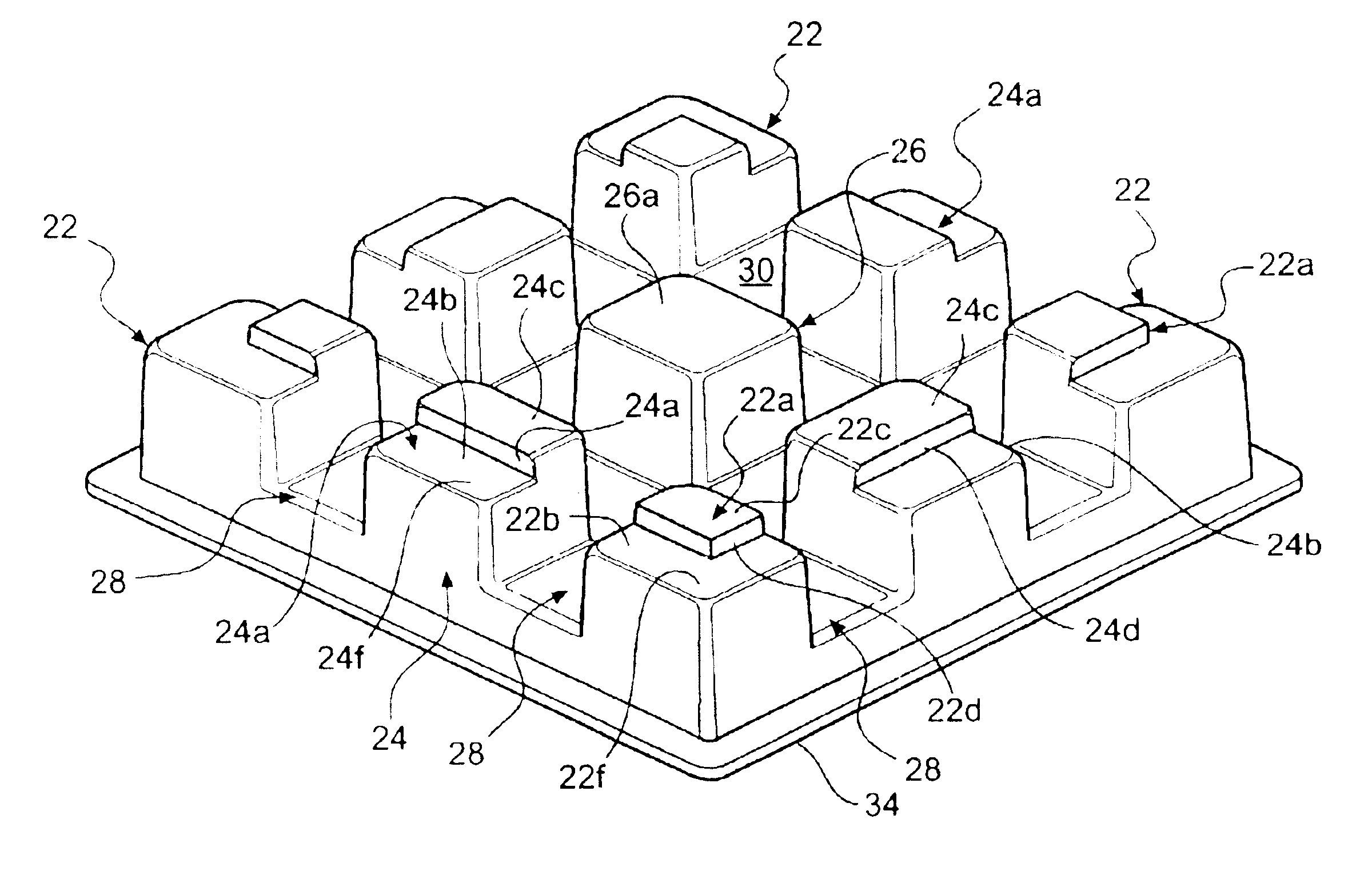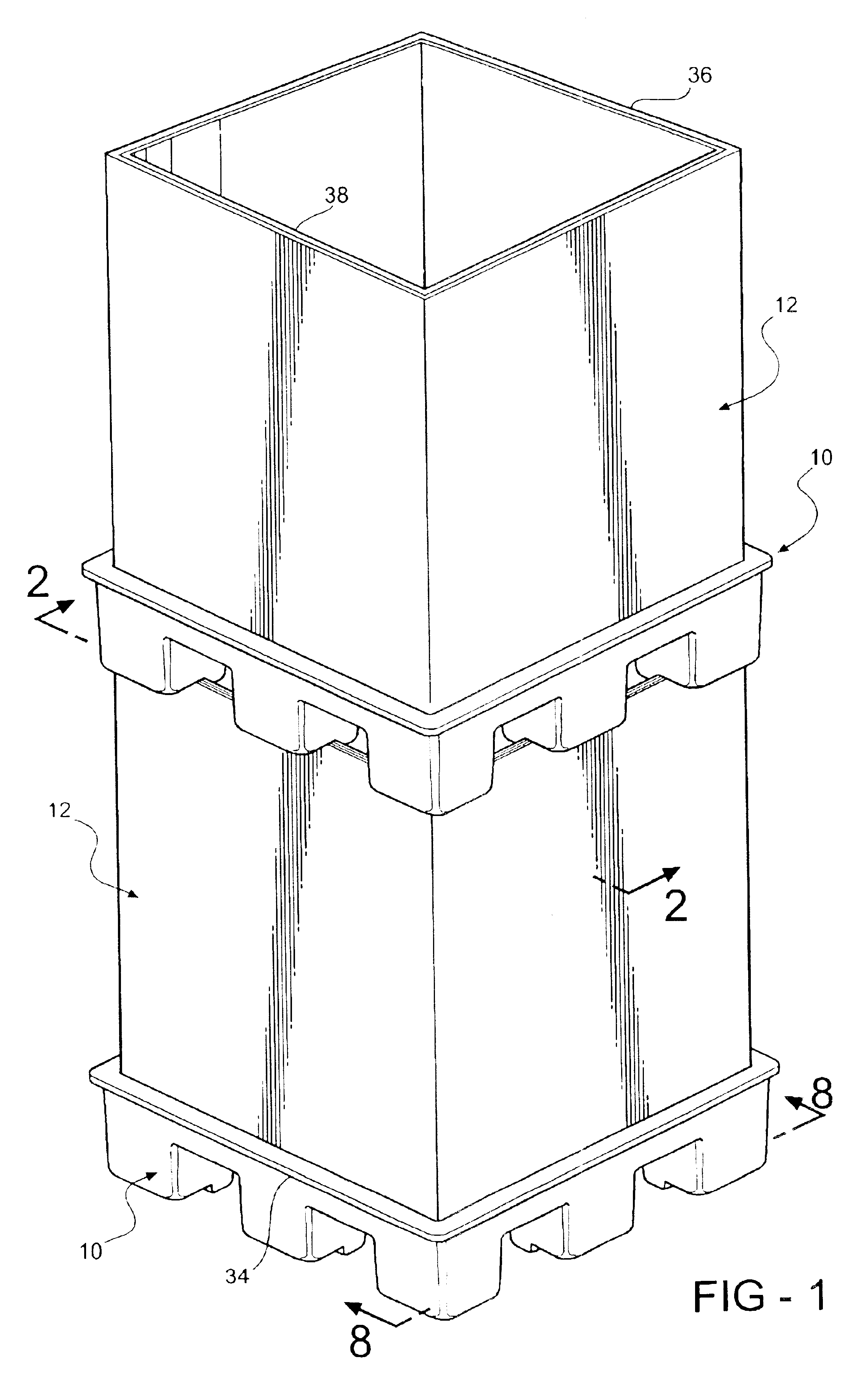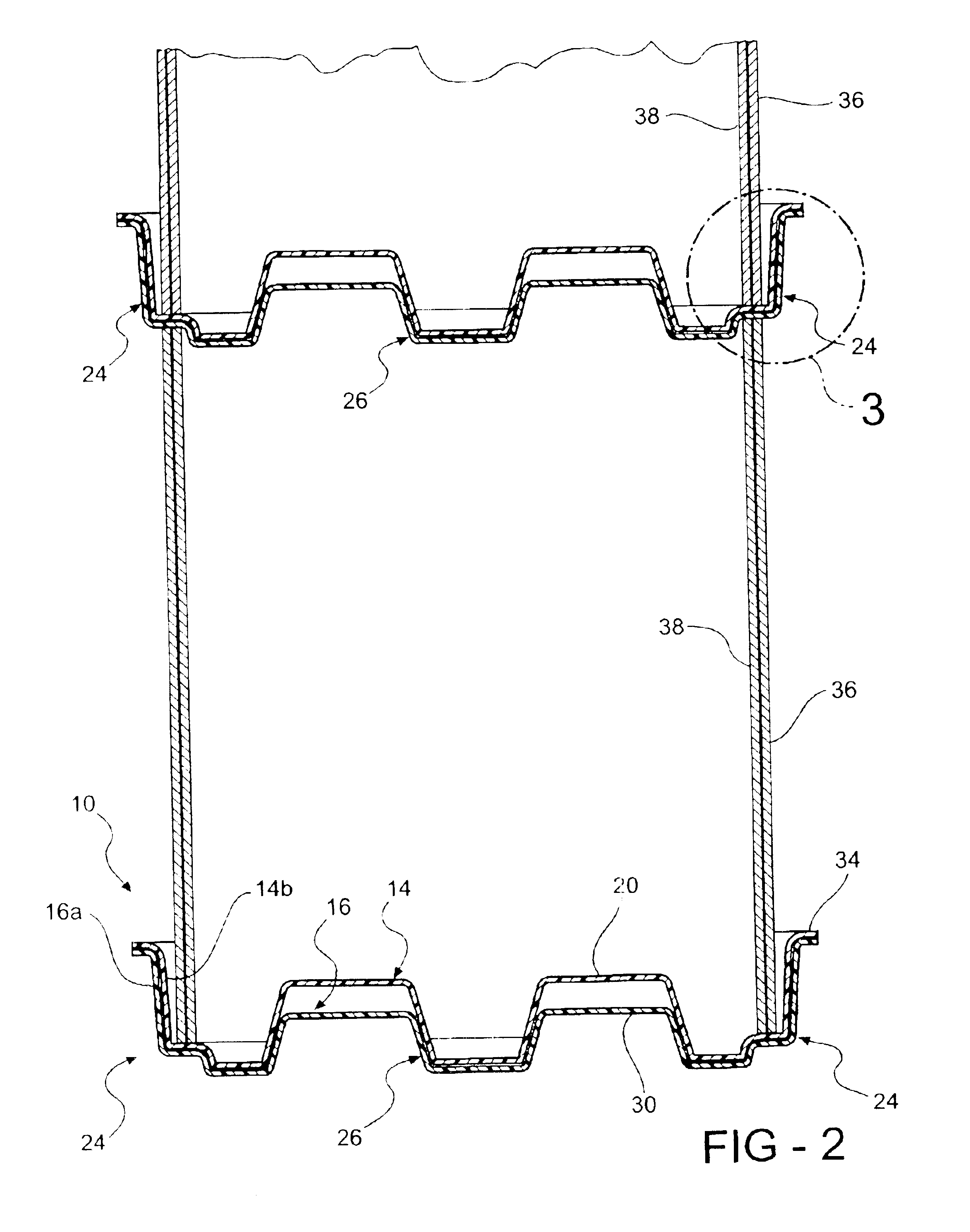Stackable open top containers
a technology of open top containers and sleeve, which is applied in the field of containers, can solve the problems of imposing a significant cost penalty, complicating the container inventory requirements, and complicated container construction, and achieves the effects of minimizing peripheral deformation, maximizing seating support, and enhancing the ability of the sleeve to resist distortion
- Summary
- Abstract
- Description
- Claims
- Application Information
AI Technical Summary
Benefits of technology
Problems solved by technology
Method used
Image
Examples
Embodiment Construction
The container of the invention, broadly considered, includes a pallet 10 and a sleeve 12. Pallet 10 is formed of a rigid plastic material and preferably employs a twin sheet construction including two sheets 14 and 16 of organic polymeric material such as polyethylene which are vacuum formed and fused or knitted together at various points to add structural rigidity. Pallet 10 is generally planar and includes a planar platform structure 18 defining a flat upper load face 20 and a plurality of hollow legs extending downwardly from platform structure 18 and opening in upper face 20. As shown, corner legs 22 are provided at each corner of the pallet, intermediate legs 24 are provided at an intermediate location along each side of the pallet, and a central leg 26 is provided centrally of the pallet.
Legs 22, 24 and 26 will be seen to cooperate to define tunnels or indentations 28 extending transversely and longitudinally across the lower face 30 of the pallet to provide relieved access ar...
PUM
 Login to View More
Login to View More Abstract
Description
Claims
Application Information
 Login to View More
Login to View More - R&D
- Intellectual Property
- Life Sciences
- Materials
- Tech Scout
- Unparalleled Data Quality
- Higher Quality Content
- 60% Fewer Hallucinations
Browse by: Latest US Patents, China's latest patents, Technical Efficacy Thesaurus, Application Domain, Technology Topic, Popular Technical Reports.
© 2025 PatSnap. All rights reserved.Legal|Privacy policy|Modern Slavery Act Transparency Statement|Sitemap|About US| Contact US: help@patsnap.com



